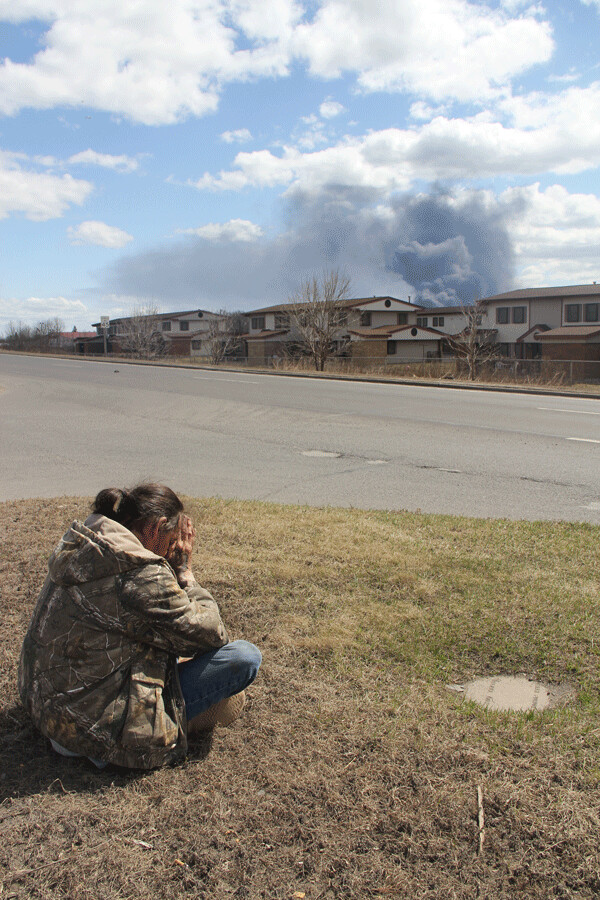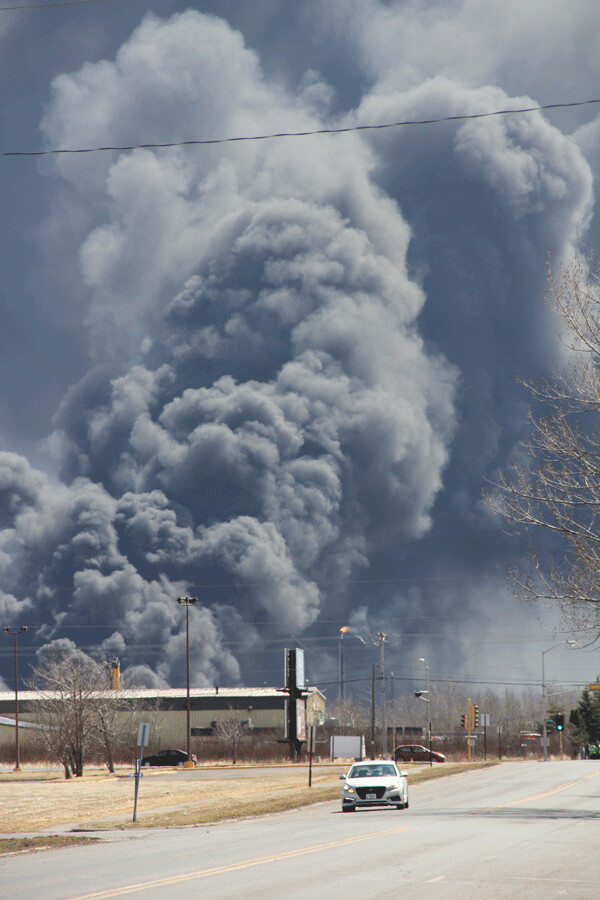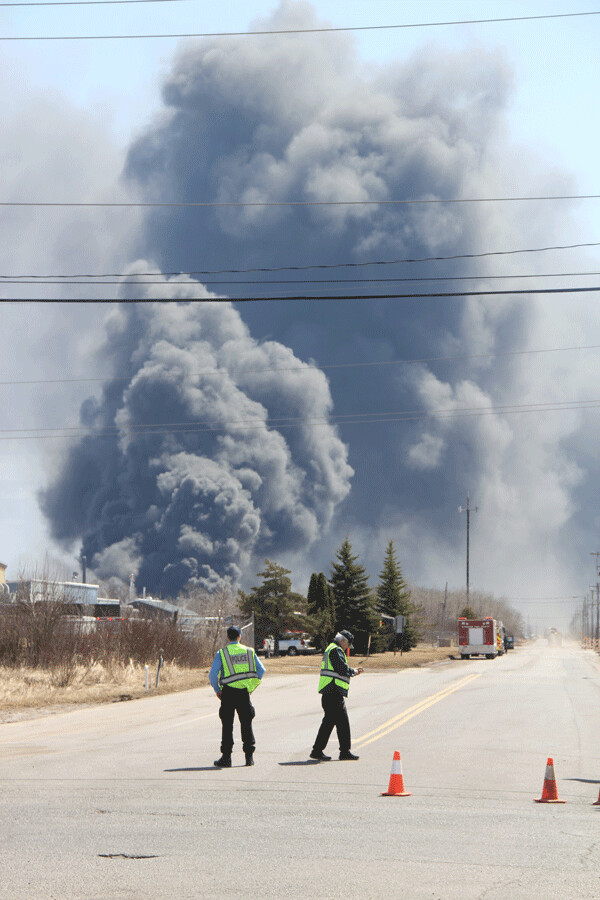News & Articles
Browse all content by date.



What started as a small fire and explosion became a major threat to those living in the Twin Ports and surrounding areas.
An explosion occurred at Husky Energy in Superior at 10 a.m. The first explosion was under control when more occurred starting around noon. After the other explosions the city began evacuating everyone living within a two-mile radius of the refinery and 10 miles south of it. This was increased to a three-mile radius around 2:45 p.m.
Multiple people were sent to the hospital as a result of the explosions but no one died. At 6:42 p.m. Superior Mayor Jim Paine took to Facebook to announce the fire was out, but the evacuation was still in place. The evacuation was officially lifted at 6 a.m. the next morning.



Seventeen people were injured, one seriously, though he is currently reported in good condition.
The cause of the explosion is unknown, and the investigation make take over a year.
Many people showed up to speak at the Superior City Council meeting May 1. Pat Farrell, a professor at the University of Minnesota Duluth, read a letter written by Dr. Steven Sternberg, a UMD professor of chemical engineering.
“Substances on or in the soil sediments may be taken in by plants or they could potentially enter the food chain for people, animals or fish,” according to Dr. Sternberg’s letter. Farrell said they want to inform the public of the health risks that remain after the fire and that it will take a year for the soil to be clean of the pollutants caused by the fire.
Meg Krausch, an assistant professor of sociology at the University of Wisconsin-Superior, compiled a list of questions she has heard people ask regarding the fire. These included, “What medical symptoms should people be on the lookout for?” “What is the instruction for people who grow food locally including commercial growers?” “What about the deer who are at the site and what about the people who eat the deer?” She said the questions were not rhetorical.
The tone of the public comments were that there were unanswered questions and anxiety. A lot of that anxiety stems from the refinery’s use of hydrogen fluoride. The fire came within 200 feet of the hydrogen fluoride tank, but there are multiple layers of protection for it.
Hydrogen fluoride is a chemical used in a wide variety of products. Husky Energy said the refinery uses it as a “catalyzing agent in the alkylation process.”
“Hydrogen fluoride gas, even at low levels, can irritate the eyes, nose, and respiratory tract,” the Center for Disease Control wrote on their website. “Breathing in hydrogen fluoride at high levels or in combination with skin contact can cause death from an irregular heartbeat or from fluid buildup in the lungs.”
According to a Wisconsin Watch/Center for Public Integrity article from 2011, when the refinery was owned by Murphy Oil, “In its own risk management plan, mandated by the U.S. Environmental Protection Agency, Murphy Oil calculated the worst-case scenario: A low-hanging cloud of HF could travel 25 miles — which could envelop Superior and Duluth, Minn. — and put 180,000 people in the Twin Ports area at risk of injury or death.”
Mayor Paine wrote on Facebook that he had spoken to leaders at Husky Energy about the use of hydrogen fluoride. “I asked them to discontinue its use of and convert to a safer chemical process and to report back to me any and all cost and infrastructure challenges that might prevent them from doing so,” he wrote.
Duluth mayor Emily Larson also has asked Husky Energy to stop using hydrogen fluoride. “It is horrifying to consider what could have happened. Let’s commit ourselves to doing better.”
In 2015, another Husky Energy crude oil refinery in Lima, Ohio experienced an explosion and fire that burned for nearly 24 hours.
The Superior oil refinery explosion may have happened a week ago but it still lingers in residents memories. The school districts had not initially had students evacuate though many parents began taking out their children anyway, such as the parents of E.W. (her parents requested her name withheld), age 10, who attends Northern Lights Elementary School, about two miles from the refinery. E.W. said she did not hear the first explosion at 10 a.m., but the teacher told the children about it and school would continue anyway.
“My mom picked me up because she was too worried and she didn’t trust them,” she said. “So she picks me up and we’re driving on the road, and right when we were driving away out of the parking lot, another big boom and it was all black after that.”
“I was at home when I became aware of the explosion,” said her mother. “An automated call from the school district came through stating that there had been an explosion at the refinery, but that school was not being cancelled. I called the elementary school and let them know I would be there shortly to pick up my child due to the explosion. I was told by the secretary that school had not been called off. I said I understood, but that I would still be there in five minutes and that I expected it would be an excused absence.”
“I felt the attendance office was trying to dissuade me by stating that school was continuing per the district,” she said.
E.W. has a sister at Superior High School. Her mother said she was unable to reach my child at the high school due to ACT testing. “I called and left two messages,” she said. “Attendance staff was not answering. I texted my older child and let her know I had left a message with the school and to leave. I finally heard back via text and she left. Shortly after, the district started evacuating kids to Amsoil warehouse.”
The family spent the night in Duluth. E.W. said that after the evacuation was lifted, she was able to return home. “You could still kind of smell it but everything was okay,” she said. “It smelled like, kind of like a bonfire but then like spray paint, kind of. It was weird.”
Richard Thomas contributed to this story.
| Tweet |


